Discovering Serenity: Your Ultimate Guide to Hanshan Temple in Suzhou
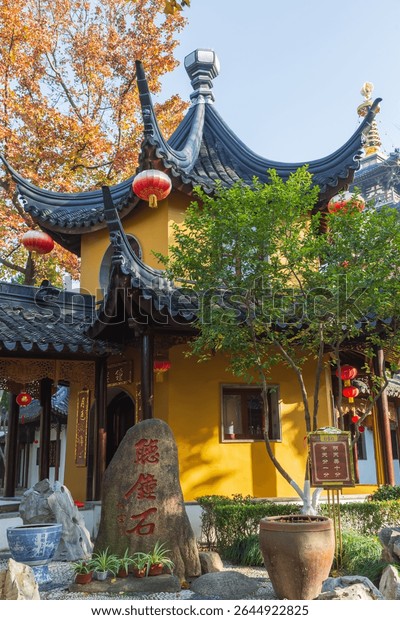
An Essential Guide to Visiting Hanshan Temple
Nestled in the serene landscape of Suzhou, Hanshan Temple is a captivating blend of spirituality and history, drawing visitors not just for its architectural beauty but for the echoes of a famous poem that resonates through its ancient walls. Known as the “Temple of Cold Mountain,” this historic Buddhist site is immortalized in the renowned poem “A Night-Mooring Near Maple Bridge,” which paints a vivid picture of its tranquil surroundings and the haunting sound of its bells tolling at midnight.
In this guide, we will take you through the essential aspects of visiting Hanshan Temple—from its rich cultural significance and architectural marvels to practical tips for your journey. You’ll discover the best times to visit, how to immerse yourself in the local atmosphere, and what to look out for as you explore this iconic temple. Whether you’re a devoted traveler seeking spiritual enrichment or simply curious about one of China’s literary landmarks, this guide aims to enhance your experience at Hanshan Temple, ensuring you leave with unforgettable memories.
In This Guide
- An Essential Guide to Visiting Hanshan Temple
- The Rich History and Legends of Hanshan Temple
- Main Highlights: What You Absolutely Can’t Miss
- Planning Your Visit: A Practical Guide
- Tickets: Prices, Booking, and Tips
- How to Get There: A Complete Transportation Guide
- Local Cuisine and Accommodation Nearby
- Frequently Asked Questions
- Final Thoughts on Your Trip
The Rich History and Legends of Hanshan Temple
Hanshan Temple, nestled in the picturesque city of Suzhou, is not merely a religious site; it is a repository of rich history and captivating legends that resonate with both locals and visitors alike. This ancient temple, with its serene ambiance and storied past, has inspired poets, artists, and scholars for centuries.
A Glimpse into History
Early Beginnings
The origins of Hanshan Temple can be traced back to the Tang Dynasty (618-907 AD), making it over a millennium old. Initially established as a modest Buddhist shrine, the temple gradually evolved into a prominent center for Mahayana Buddhism. Its name, “Hanshan,” translates to “Cold Mountain,” reflecting both the natural beauty surrounding the temple and the tranquility it embodies.
The Song Dynasty and Literary Fame
The temple gained significant renown during the Song Dynasty (960-1279 AD) thanks to the famous poet Zhang Ji. His poem, “A Night-Mooring Near Maple Bridge” (枫桥夜泊), immortalized Hanshan Temple in Chinese literature. The poem paints a vivid picture of a traveler’s experience as he hears the temple’s bell tolling at night, creating an ethereal connection between the temple, nature, and human emotion. The lines echo through time, inviting visitors to reflect on their own journeys and the passage of time.
Architectural Marvel
The Bell Tower
One of the most iconic features of Hanshan Temple is its towering bell, which was originally cast during the Tang Dynasty. The bell is renowned for its deep, resonant sound that can be heard across the landscape, marking significant events such as the Lunar New Year. However, the original bell was lost during historical turmoil, including the chaos wrought by the Eight-Power Allied Forces in the early 20th century. Despite this, the temple’s current bell, cast in the early 1900s, continues to be a symbol of hope and renewal.
The Temple Complex
The temple complex itself is a reflection of traditional Chinese architecture, characterized by elegant eaves and intricate tile work. Visitors can stroll through lush gardens, admire the tranquil ponds, and appreciate the various halls dedicated to different Buddhist deities. Each aspect of the temple is imbued with a sense of peace and spiritual significance, inviting contemplation and reverence.
Legends and Folklore
The Tale of the Bell
Among the many legends associated with Hanshan Temple, the story of its bell is particularly poignant. It is said that during a time of great strife, the bell’s toll could soothe the hearts of the weary. Local lore suggests that those who hear the bell’s ringing while standing before the temple will have their wishes granted. This belief draws countless visitors, each hoping for a moment of spiritual connection and fulfillment.
The Ghostly Monks
Another legend tells of ghostly monks who wander the temple grounds at night, continuing their prayers and meditations even after death. Visitors often report feeling an unexplainable presence, and some claim to have seen shadowy figures moving gracefully through the temple. Whether a product of imagination or a glimpse into the spiritual realm, these stories add an air of mystery to Hanshan Temple.
Cultural Significance
Hanshan Temple is not just a destination for those seeking spiritual solace; it is a cultural landmark that embodies the spirit of Suzhou. The temple hosts various events and festivals, particularly during the Lunar New Year, when the bell is rung to herald the arrival of the new year. This tradition draws crowds from across the region, infusing the temple with a vibrant atmosphere of celebration and reflection.
Conclusion
In essence, Hanshan Temple stands as a testament to the enduring nature of faith, culture, and literary legacy. Its rich history, woven with legends and architectural beauty, makes it a must-visit destination for anyone traveling to Suzhou. As you walk through its tranquil grounds, you may just find yourself inspired by the tales of the past, connecting your own story with that of this timeless temple.
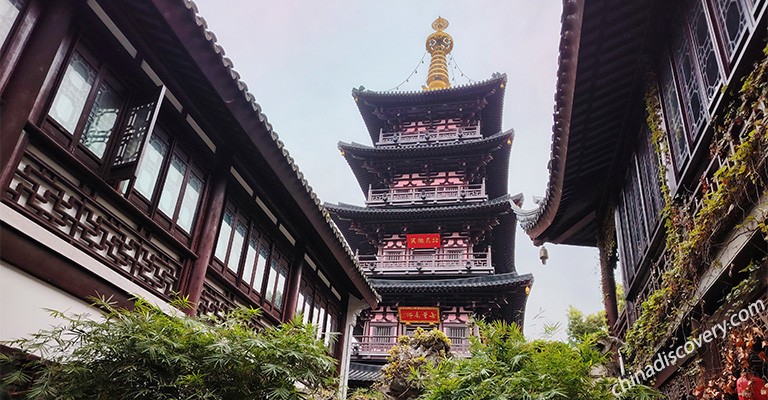
Hanshan Temple.
Main Highlights: What You Absolutely Can’t Miss
The Grand Bell Tower
As you approach Hanshan Temple, one of the first sights to capture your attention is the Grand Bell Tower, housing a massive ancient bell that has echoed through the ages. This impressive structure dates back to the Tang Dynasty and is renowned for its stunning sound that resonates throughout the temple grounds. Don’t miss the chance to ring the bell yourself for good luck and to experience a tradition that has been passed down for centuries. Tip: Visit during the early morning or late afternoon to enjoy a quieter atmosphere and better lighting for photographs.
The Tranquil Courtyards
Wander through the serene courtyards that surround the temple buildings. These well-maintained gardens are adorned with traditional Chinese flora and offer a peaceful respite from the bustling city outside. As you stroll, take in the intricate designs of the temple architecture and the soft sounds of nature. Tip: Bring a small sketchbook or camera to capture the beautiful scenery, especially the lotus ponds which are particularly stunning in the summer months.
The Poignant Poem Tablet
No visit to Hanshan Temple would be complete without paying homage to the famous poem, “Night-Mooring Near Maple Bridge.” Inscribed on a stone tablet located in the adjacent park, this poem immortalizes the temple in Chinese literature. Its evocative verses reflect the beauty and tranquility of the area, making it a perfect photo opportunity. Tip: Take a moment to read the poem aloud while standing in front of the tablet, letting its sentiments wash over you.
The Statues of Deities
Inside the temple, you’ll find an array of captivating statues representing various deities of Buddhism. Each statue is intricately crafted and holds spiritual significance. Take your time to observe the details and the atmosphere of reverence that surrounds them. Tip: Be respectful and quiet while exploring this sacred space, and consider leaving a small offering or prayer as a gesture of goodwill.
The Scenic Canals
Hanshan Temple is beautifully situated along the picturesque canals that Suzhou is famous for. After your visit, take a leisurely stroll along the water’s edge, where you can enjoy views of traditional wooden boats and charming bridges. This area is perfect for soaking in the local ambiance and snapping some gorgeous photos. Tip: Bring a picnic to enjoy by the water, or stop by one of the nearby shops to sample local snacks.
The Festive New Year Celebrations
If you happen to visit during the Chinese New Year, you’re in for a treat! Hanshan Temple is known for its vibrant celebrations, including the ringing of the bell at midnight to signal the arrival of the new year. The atmosphere is filled with joy, music, and the sounds of firecrackers. Tip: Arrive early to secure a good spot for viewing, and be sure to enjoy the festive decorations that adorn the temple during this time.
The Surrounding Snack Streets
Just outside the temple grounds, you’ll find a variety of street food stalls offering delicious local treats. From savory dumplings to sweet pastries, these culinary delights are a must-try for any visitor. Indulge your taste buds and experience the flavors of Suzhou in a casual and lively setting. Tip: Don’t be afraid to try something new, and look for recommendations from locals on what to sample!

Hanshan Temple.
Planning Your Visit: A Practical Guide
Best Time to Visit
Hanshan Temple is a year-round attraction, but the best time to visit is during the spring (March to May) and autumn (September to November) months when the weather is pleasant and the surroundings are beautifully adorned with blooming flowers or vibrant autumn leaves. Early mornings or late afternoons are ideal for avoiding crowds, allowing for a more serene experience while you explore the temple and its grounds.
Recommended Itinerary
- Arrival: Aim to arrive at the temple by 8:00 AM to enjoy the peaceful atmosphere before the crowds arrive.
- Exploration: Spend about 1 to 1.5 hours exploring the temple. Be sure to check out the main hall, the ancient bell, and the peaceful gardens.
- Photography: Take your time capturing the stunning architecture and the tranquil surroundings.
- Cultural Experience: If you’re interested, engage in a brief prayer or ring the bell, a tradition that symbolizes good wishes.
- Nearby Attractions: After visiting Hanshan Temple, consider taking a short walk to the nearby Maple Bridge and enjoy the scenery that inspired the famous poem “Night-Mooring Near Maple Bridge.”
Photography Tips
- Lighting: The best lighting for photography can be found in the early morning or late afternoon when the sun casts a warm glow over the temple.
- Angles: Capture the temple from different angles for varied perspectives. The gardens surrounding the temple make for beautiful backdrops.
- No Flash: Be mindful of the temple’s tranquility; avoid using flash photography inside the temple to respect the space and its visitors.
- Candid Shots: Capture moments of worship or visitors in contemplation to portray the temple’s serene atmosphere.
What to Wear
- Comfortable Shoes: Since you will be walking around the temple grounds, wear comfortable shoes suitable for walking.
- Modest Clothing: As a place of worship, it’s respectful to wear modest attire. Long pants and sleeves are recommended.
- Weather-Appropriate: Check the weather forecast before your visit. Bring a light jacket or umbrella during the rainy season (June to August).
Insider Tips
- Timing Your Visit: The temple can get crowded during weekends and holidays, so try to plan your visit on a weekday to enjoy a quieter experience.
- Local Snacks: After your temple visit, explore the nearby streets for local snacks and souvenirs, such as silk scarves and traditional Chinese crafts.
- Ring the Bell: Don’t miss the opportunity to ring the ancient bell. It’s a significant cultural practice and brings good luck.
- Learn the Poem: Familiarize yourself with the poem “Night-Mooring Near Maple Bridge” before your visit, as it adds depth to your experience at the temple.
- Respect the Faith: Be respectful of the worshippers and their practices. Observe any rituals quietly and avoid disrupting their moments of prayer.
By following this guide, you will enhance your visit to Hanshan Temple, allowing you to appreciate its cultural significance and serene beauty. Enjoy your exploration of this historical site in Suzhou!
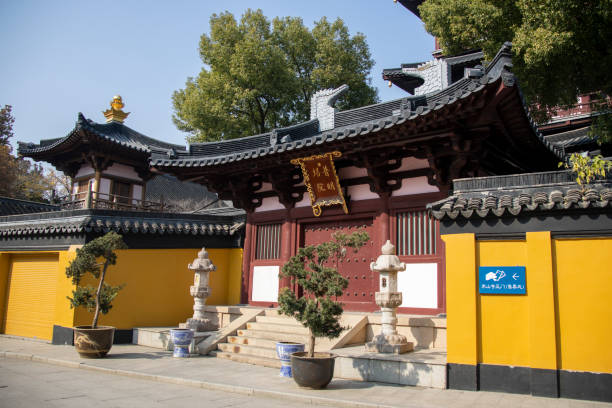
Hanshan Temple.
Tickets: Prices, Booking, and Tips
Visiting Hanshan Temple is a delightful experience steeped in history and culture. To ensure a smooth visit, it’s essential to be informed about ticket prices, booking procedures, and useful tips.
| Ticket Type | Price (CNY) | Includes |
|---|---|---|
| Adult Admission | 20 | Access to temple grounds and attractions within the temple complex. |
Booking Information
Tickets for Hanshan Temple can be purchased at the entrance from 7:30 AM each day. While advance booking is not typically required due to the relatively low visitor volume, it is advisable to plan your visit during weekdays or early hours to avoid crowds, especially if you wish to enjoy the serene atmosphere or take photographs without many tourists around.
Tips for Your Visit
- Timing: The temple is open daily from 7:30 AM to 5:00 PM. Visiting early in the morning can provide a more tranquil experience.
- Getting There: While the temple is accessible by foot, taking a taxi is recommended for convenience, especially if you’re carrying luggage or prefer a direct route.
- Cultural Etiquette: Remember to respect the temple’s customs. Photography may not be allowed in certain areas, so observe any signs and be mindful of worshippers.
- Facilities: The area around the temple features local snacks and shops selling silk scarves, so take some time to explore the surroundings.
Prepare to be enchanted by the beauty and history of Hanshan Temple, and enjoy your cultural journey!
How to Get There: A Complete Transportation Guide
From the Nearest Major City
Getting to Suzhou
The most accessible major city to Hanshan Temple is Shanghai. Suzhou is approximately 100 kilometers (62 miles) from Shanghai, making it a popular day trip destination.
- By Train:
The high-speed train is the fastest option. Trains from Shanghai to Suzhou depart frequently from both Shanghai Hongqiao and Shanghai Railway Station. The journey takes about 25 to 30 minutes. - Cost: Tickets range from 40 to 70 RMB (approximately $6 to $10) depending on the class and time of booking.
-
Arrival Station: You’ll arrive at Suzhou Railway Station, which is centrally located.
-
By Bus:
Long-distance buses also operate between Shanghai and Suzhou, though they are less popular due to longer travel times. - Duration: Approximately 2 to 2.5 hours, depending on traffic.
- Cost: Tickets typically cost between 30 to 50 RMB (around $4 to $7).
-
Departure Points: Buses leave from various locations in Shanghai, including Shanghai Long Distance Bus Station.
-
By Car:
If you prefer to drive, you can rent a car or hire a taxi. The journey will take about 1.5 to 2 hours, depending on traffic conditions. - Cost: Tolls along the way can amount to around 30 RMB (about $5), with additional costs for fuel.
Getting to Hanshan Temple
Once you arrive in Suzhou, you have several options to reach Hanshan Temple.
- By Taxi:
The easiest and most convenient way to reach Hanshan Temple is by taxi. Simply show the driver the temple’s name (寒山寺) or use a translation app. - Duration: The ride typically takes around 20 minutes from Suzhou Railway Station.
-
Cost: Expect to pay around 30 to 50 RMB (approximately $4 to $7).
-
By Public Transport:
If you prefer to use public transport, buses and the subway are viable options. - Subway: Take Line 1 to Xihuan Road Station (西玉路站). From there, it’s about a 20-minute walk to the temple.
-
Cost: A subway ticket costs around 3 RMB (less than $1).
-
Buses: Several bus routes serve the area, including buses 6, 25, and 38, which stop near the temple.
- Duration: Depending on traffic, the bus ride can take 30 to 40 minutes.
- Cost: Bus fares are around 2 RMB (less than $1).
Getting Around the Scenic Area
Once you arrive at Hanshan Temple, navigating the scenic area can enhance your experience.
-
Walking:
The temple grounds are compact and best explored on foot. Take time to wander through the beautiful gardens, admire the architecture, and soak in the serene atmosphere. -
Guided Tours:
While English-language tours may be limited, local guides often offer insights into the temple’s history and significance. You can hire a guide at the entrance or check for tour options through your hotel or local tourism offices. -
Accessibility:
The temple is accessible for most visitors, but some walking paths may be uneven. Comfortable shoes are recommended. -
Nearby Attractions:
After visiting Hanshan Temple, consider exploring other nearby attractions such as Xiyuan Temple and the picturesque canals of Suzhou, which are within walking distance.
By following this transportation guide, you can ensure a smooth and enjoyable visit to Hanshan Temple, immersing yourself in its rich cultural heritage and stunning surroundings.
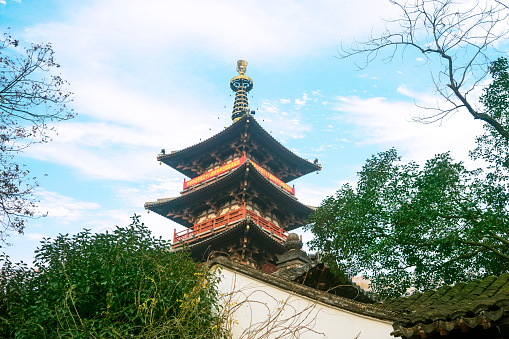
Hanshan Temple.
Local Cuisine and Accommodation Nearby
When visiting Hanshan Temple, immerse yourself not only in its rich history but also in the delightful local cuisine and comfortable accommodations that Suzhou has to offer.
Culinary Delights
-
Suzhou-style Noodles (苏州面)
A staple of the local diet, these hand-pulled noodles are often served in a savory broth with toppings like tender slices of pork, mushrooms, and fresh vegetables. The texture is chewy, and the flavors are enhanced with a drizzle of sesame oil and a sprinkle of scallions. -
Sweet and Sour Mandarin Fish (糖醋桂花鱼)
This iconic dish features a whole fish skillfully prepared to maintain its shape, then deep-fried until perfectly crisp. It’s bathed in a vibrant sweet and sour sauce made from vinegar, sugar, and sometimes a hint of orange, making it a true representation of Suzhou’s culinary artistry. -
Beggar’s Chicken (叫花鸡)
A traditional dish that dates back centuries, Beggar’s Chicken is a whole chicken marinated, wrapped in lotus leaves, and then encased in clay before being slow-cooked. The result is incredibly tender meat infused with aromatic herbs and a unique earthy flavor, often enjoyed during celebratory meals. -
Soochow Dumplings (苏州小笼包)
These delicate steamed buns are filled with a savory mix of pork and gelatin that melts into a rich broth when cooked. Served with a side of vinegar and ginger, they are a must-try for anyone wanting to experience authentic Suzhou street food.
Places to Stay
Luxury Accommodation
– W Suzhou
Nestled beside Jinji Lake, W Suzhou offers a luxurious retreat with modern amenities and stunning views. Guests can indulge in the on-site spa, dine at gourmet restaurants, or enjoy the vibrant nightlife that the hotel has to offer.
Boutique Hotel
– Suzhou Renjia Boutique Hotel
This charming hotel provides a cozy atmosphere with traditional decor and personalized service. Located near the scenic gardens, it’s perfect for travelers seeking a unique and immersive experience in Suzhou’s culture.
Budget-Friendly Option
– GreenTree Inn Suzhou Xiangcheng District
Ideal for budget-conscious travelers, this hotel offers comfortable accommodations without the hefty price tag. With basic amenities and a central location, it’s a great base for exploring Han Shan Temple and the surrounding attractions.
Whether you are indulging in the flavors of Suzhou or enjoying a restful night nearby, your visit to Hanshan Temple promises to be a culturally enriching experience.
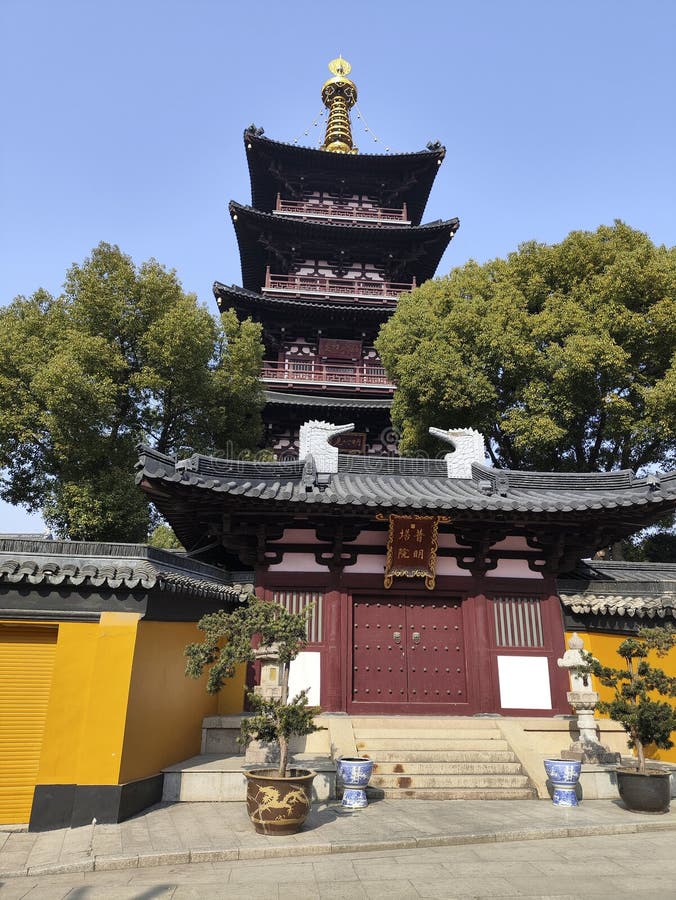
Hanshan Temple.
Frequently Asked Questions
Frequently Asked Questions About Hanshan Temple
-
Is Hanshan Temple suitable for children and the elderly?
Yes, Hanshan Temple is generally suitable for visitors of all ages. The temple grounds are relatively flat, making it accessible for the elderly and families with children. However, parents should keep an eye on their younger children, as the temple can be busy, especially during peak tourist seasons. -
Are there English signs or guides available at the temple?
While there may be a few English signs, most information is presented in Chinese. Unfortunately, English-speaking guides are not typically available. It’s advisable to bring a translation app or do some research beforehand to enhance your visit. -
How much time should I plan to spend at Hanshan Temple?
A visit to Hanshan Temple usually takes about 30 minutes to an hour. This should give you enough time to explore the temple grounds, take in the architecture, and appreciate the beautiful scenery without feeling rushed. -
Is there an entrance fee?
Yes, there is an entrance fee of approximately 20 RMB per person. This ticket grants you access to the temple area and its various attractions. -
What are the opening hours for Hanshan Temple?
Hanshan Temple is open daily from 7:30 AM to 5:00 PM. It’s best to arrive early to avoid crowds and enjoy a more peaceful experience. -
Can I take photos inside the temple?
Photography is generally allowed in the temple grounds, but be mindful of specific areas where signs may prohibit it. Always respect the sanctity of the space and the wishes of other visitors. -
Is there a recommended way to get to Hanshan Temple?
Taking a taxi is the most convenient way to reach Hanshan Temple, especially if you’re unfamiliar with the area. Public transportation options are available, but they may require a longer walk from the nearest subway station. -
Are there dining options nearby?
Yes, there are various dining options within a short distance of Hanshan Temple, ranging from local Chinese cuisine to snacks. Exploring the surrounding area can also lead you to some delightful culinary experiences.
Final Thoughts on Your Trip
Visiting Hanshan Temple is more than just a stop on your travel itinerary; it’s an immersion into the rich tapestry of Chinese culture, history, and spirituality. As you stroll through the ancient grounds, adorned with intricate architecture and surrounded by serene landscapes, you can almost hear the echoes of the famous poem “A Night-Mooring Near Maple Bridge,” which immortalizes the temple’s charm.
Take a moment to ring the temple’s ancient bell—an act that connects you to centuries of tradition and devotion. While the temple’s compact size may suggest a quick visit, the depth of its beauty and significance invites you to linger a little longer. Here, you’ll find a serene space that transcends time, offering a peaceful respite from the bustling city of Suzhou.
As you conclude your journey at Hanshan Temple, remember that travel is not just about the destinations you visit, but the moments you cherish. Let the tranquility of the temple inspire you to carry a piece of this experience with you, reminding you of the beauty in stillness and the importance of connecting with history. Safe travels, and may your adventures ahead be filled with wonder!